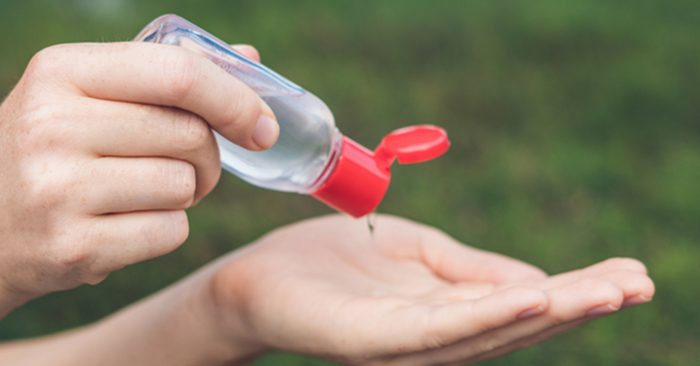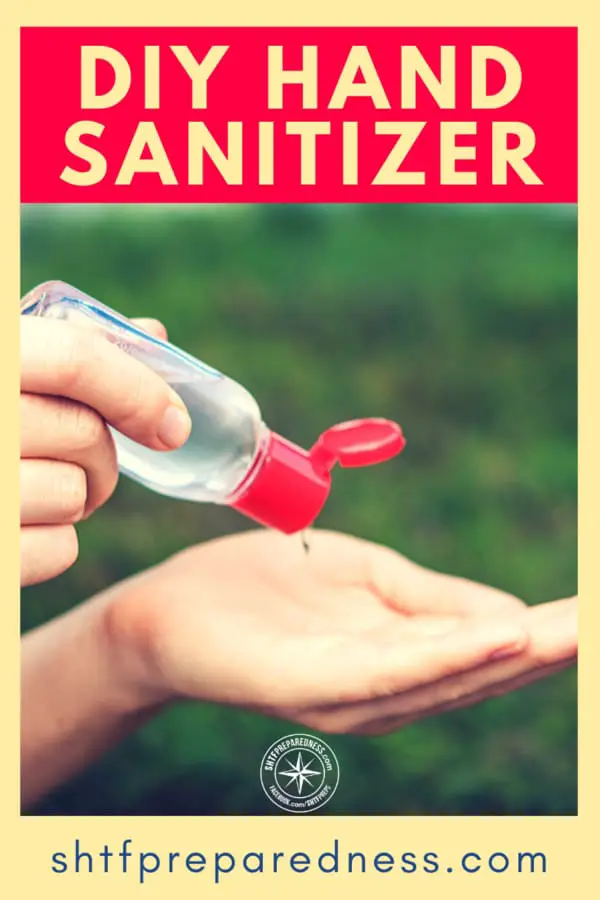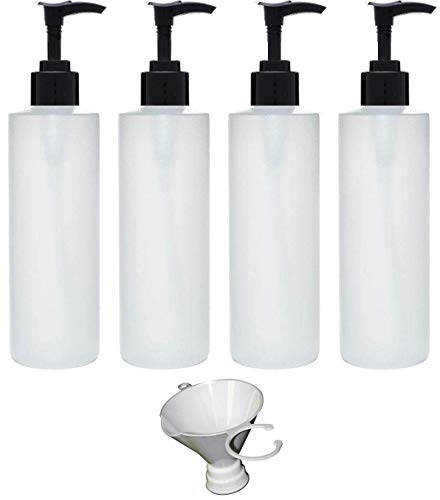Hand sanitizer can be a very valuable commodity for daily life or during a pandemic. Be ready with your own DIY hand sanitizer recipe if supplies run low.

Hand sanitizer has been an amazing addition to personal hygiene routines and medical personnel. Portable, effective, and quick. It’s everything you need in a hygiene method.
Used properly, it kills the infection-causing germs on your hands. A healthy dollop in your palm, rub until dry, and you are safe to go about your business.
Also called alcohol gel, it is used by moms, kids, dads, doctors, nurses, teachers, and the list goes on. Clinical studies have shown the effectiveness of using hand sanitizer to reduce infections in care facilities.
This can easily be extended to the home. We have grown accustomed to having it around.
Making your own is easy, inexpensive, and allows you to have a resource when store-bought sanitizer becomes scarce.
Given the paucity of supplies in local stores during the current COVID-19 pandemic, the need for a homemade hand sanitizer recipe has become more apparent with every day that passes.
How Does Hand Sanitizer Work?
The main ingredient in both commercially produced and your DIY hand sanitizer is alcohol. Both ethyl alcohol (good ole’ fashion drinkin’ alcohol) or isopropyl alcohol (rubbing alcohol).
Alcohol affects the outer membranes of bacteria. It destabilizes it and exposes the internal “organs” of the germs, which results in its death. ☠️
Alcohol has been used for centuries in this capacity. Wine was used for preserving the dead in Egyptian times. And who hasn’t seen an animal specimen floating in a jar of alcohol? Especially in a movie or in an old museum?
Other forms of alcohol (distilled spirits like brandy, whiskey, or rum) have even been used to preserve fruit. There are a few good recipes out there. Do a quick internet search to find them.
Alcohol creates an environment toxic to bacteria and slows or halts its growth. This aids in food preservation or specimen preservation. It is this very process that makes it great for personal hygiene.
Using high-proof alcohol directly on your hands can be harsh. It strips away the natural oils and leaves your hands vulnerable. Alcohol gels provide a level of protection with aloe vera or similar gel. The gel also helps to stabilize the mixture and provides a more controlled use.
Note: hand sanitizer is not a substitution for washing your hands. Hot, soapy water is still best and should be used every time you have engaged in any risky activity.
DIY Hand Sanitizer Recipe
The recipe for your gel will vary based on the alcohol used. The important part is to ensure that your gel is within a range of 72% to 80% alcohol.
Formula: volume of aloe (or other) gel = volume of alcohol * grade (%) * 0.28 (or 0.20 to be conservative)
Too little alcohol and the virus will survive. Alternatively, a 100% alcohol concentration could envelop the virus and seal it until the alcohol evaporates, leaving the possibility of the virus surviving.
The ratios included below must be adhered to. This ensures that your DIY hand sanitizer is able to do its job.
The two main ingredients will be aloe vera gel and alcohol. You can choose either Isopropyl/rubbing alcohol or ethyl alcohol. This includes vodka or other high-proof spirits.
You CANNOT use denatured alcohol that you find in hardware stores. While this is Ethyl alcohol, it is purposely modified (e.g. poison is added) so that it can’t be consumed.
+90% Alcohol
This includes 99% and 91% isopropyl/rubbing alcohol. It is possible to find a high percentage (proof) of vodka however it may be price prohibitive. One such example is 190 proof (92.4% alcohol) Everclear.
Remember that proof equals two times the alcohol percentage. A simple example is if you want 90% alcohol then you need it to be 180 proof.
Using the conservative formula above per 100ml of 90% alcohol (volume of aloe gel = Volume of alcohol * grade (%) * 0.20) we get:
100ml * 90% * 0.20 = 18ml of aloe gel for every 100ml of 90% alcohol.
+70% Alcohol
This includes 70% isopropyl/rubbing alcohol as well as popular 151 proof ethyl such as Everclear 151. Unless you want your hands smelling like rum, I wouldn’t recommend Bacardi 151.
If we use the conservative formula above per 100ml of 70% alcohol we get:
100ml * 70% * 0.20 = 14ml of aloe gel for every 100ml of 70% alcohol. In this case, we use less gel due to the lower concentration of alcohol.
The Mix
Add both ingredients to a bowl and mix really well. Use a manual or electric beater. It’s that simple.
Just make sure that it’s thoroughly combined. It should be able to hold tiny air bubbles within it.
Put your gel into a dispensable container (like a used hand sanitizer bottle). You may need to shake the bottle a little bit before use if it sits for a few days.
Additions
You can add a few essential oils to your DIY hand sanitizer. This can improve both the smell and reportedly the effectiveness. My favorites are Tea Tree, Lavender, Oregano, and Sage.
Go slow and add the essential oils a little at a time (e.g. one drop at a time). Some may cause severe irritation if too much is used.
Using Your DIY Hand Sanitizer
To get the maximum benefit out of your gel you must use it properly. A little dab and a quick wipe will only fool you into thinking you’ve done the job correctly.
Properly using DIY hand sanitizer is all about contact time. You need to make sure that your hands are wet for at least 30 seconds. That’s about one full round of the ABCs song.
Squirt a small amount into your hands and rub vigorously. Start singing. If your hands are dry before you hit XYZ, add more to your hands. Remember to increase the amount next time.
Again, if you aren’t doing it right you are engaging in hygiene theater. The germs will still be there as you touch your face and food. Pretty soon you will find yourself sick.
Conclusion
Hand sanitizer has been a game-changer for personal hygiene. These days you find it in your doctor’s office, most businesses, the gym, even your home, car, and school children’s book bag.
Used effectively it stops pathogens from migrating from your hands to somewhere more vulnerable.
In fact, the underlying ingredients will be critical items to stockpile for a pandemic during which store-bought hand sanitizer will very likely be sold out in local stores and Amazon.
However, now you have the ability to make your own. With a few raw materials, you can have your own personal supply. Even better you will know exactly what is in it and what your family is using.




Leave a comment
You must be logged in to post a comment.